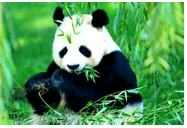题目内容
7.
It's not a chocolate coin wrapped in gold foil,people.That's actual metal that composes that Olympic medal,so why do athletes bite them?There's actually a few reasons,but the most obvious is that it's a pose photographers really,really like to capture.
"It's become an obsession (迷恋) with the photographers,"David Wallechinsky,the president of the International Society of Olympic Historians and co-author of"The Complete Book of the Olympics"told CNN in 2012."I think they look at it as an iconic(偶像的) shot,as something that you can probably sell.I don't think it's something the athletes would probably do on their own."
Biting down on a piece of metal is more likely something someone might have done during the Gold Rush to test whether the shiny golden rock they just panned (淘洗) for was actually pyrite (硫化金) or fool's gold.Human teeth are harder than gold but softer than pyrite,according to the Mohs Hardness Scale,which categorizes how easily minerals scratch.This means a quick bite to real gold would actually leave an indentation(缺口,凹进).A hard chew of pyrite,meanwhile,might damage your teeth.
The practice also once served to see whether coins were solid gold or just gold-plated (镀金) over a cheaper metal,Today I Found Out explains.With that in mind,it's likely that Old West/pirate lore (传说) led to someone once biting their Olympic medal in a spontaneous (自动的,自发的),"Is this real life?"moment,and the photographers thought it was cute.Because if someone really was hoping to discover whether that gold medal is pure gold,their smiles would quickly fade.
Olympic gold medals are actually just 1.34 percent gold.The rest is silver.And much of it is recycled silver this time around,which makes the 2016 Rio medals"the most sustainable ever made,"according to Forbes magazine contributor Anthony DeMarco (via ABC News).DeMarco says the materials that make up a"gold"medal are worth﹩564.
Winning athletes would be better served to make sure the checks they receive for coming out on top don't bounce.Along with their gold medals,Olympic winners get﹩25,000 prizes.
28.Your teeth won't be damaged according to the passage when you biteB.
A.pyrite B.gold C.fool's gold D.gold-plated metals
29.Which of the following statements is TRUE about athletes biting Olympic medals?D
A.The photos of biting medals sell well for athletes.
B.Athletes are keen on biting medals when photographed.
C.Olympic medals are chocolate coins wrapped in gold foil.
D.Athletes are required by photographers to bite medals.
30.The underlined"solid"in Paragraph 4 is closest in meaning toA.
A.pure B.hard C.strong D.fake
31.From the last three paragraphs,we can infer thatC.
A.Old West pirate judged gold by biting it
B.Olympic gold medals are made of a little gold
C.it's winning not pure gold medals that make athletes smile
D.photographers thought that athletes'biting gold medals was cute.
分析 本文属于说明文阅读,作者通过这篇文章主要向我们描述了获奖运动员喜欢咬奖牌的现象的分析,并且指出这并不健康.
解答 28.B.细节理解题.根据第四段只能怪的信息"Human teeth are harder than gold but softer than pyrite,…"以及"A hard chew of pyrite,meanwhile,might damage your teeth."可知,当人们咬金子的时候不会伤害牙齿,而咬硫化金(pyrite或fool's gold)以及镀金的金属时,会伤害牙齿.故正确答案为B.
29.D.细节理解题.根据最后一段中的信息:There's actually a few reasons,but the most obvious is that it's a pose photographers really,really like to capture.可知,获胜运动员咬金牌最明显的一个原因是摄影师真正喜欢扑捉的运动员的一个动作.故正确答案为D.
30.A.词义猜测题.根据文章内容可知,该下划线词所在句子含义是:这个做法(咬金子)曾一度作为检验硬币是否是纯金的还是在较便宜的金属上镀金的.由此可知,此处solid的含义应是"纯的",与pure含义相同.故正确答案为A.
31.C.推理判断题.根据第四段最后一句:Because if someone really was hoping to discover whether that gold medal is pure gold,their smiles would quickly fade.可知,对于一名获胜的运动员来说,如果通过咬金牌来发现金牌是否时纯金的,那么他们的笑容就很快会变得黯然失色.由此可以推断,获胜的运动员所在意的并不是金牌的含金量,而是获胜本身.由此可知,正确答案为C.
点评 考察学生的细节理解和推理判断能力,做细节理解题时一定要找到文章中的原句,和题干进行比较,再做出正确的选择.在做推理判断题不要以个人的主观想象代替文章的事实,要根据文章事实进行合乎逻辑的推理判断.

The origin of the eastern cultures is mainly from two countries:China and India.Both of the two cultures are gestated(孕育)by(22)A.In China,the mother river is the Yellow River(23)Cthe Indian one is the Hindu River.These two cultures were(24)B for several thousand years and formed their own styles Then in the Tang Dynasty of China,the Chinese culture(25)Awent overseas to Japan,(26)B into the Japanese society and(27)Cthe Japanese culture nowadays.Though a bit different from the Chinese one,it(28)B to the same system.
When the two mother rivers gave birth to the eastern culture,another famous culture was(29)Con the Mesopotamian Plain(美索不达米亚平原)-the Mesopotamian Civilization.This civilization later on developed into the cultures of Ancient Greece and Ancient Rome.And these two are well-known as the(30)A of the European culture.(31)B the Chinese culture,the European one also(32)Awaters.When the colonists of England(33)C in America,their culture went with them over,the Atlantic Ocean.So the American culture doesn't(34)A from the European one a lot.
At the same time,the (35)Dof the language systems adds to the cultural differences.In the East,most languages belong to the pictographic (象形文字的) language while the Western languages are(36)Bbased on the Latin system,for example,the one I'm using to write this paper.
Other factors like human race difference(37)Acounts as well.However,(38)C the far distance and the steep areas between the East and West,the two cultures seldom(39)A until recent centuries.(40)D,they grew up totally in their own ways with almost no-interference(干扰) from the other.
| 21.A.in all | B.above all | C.in no case | D.on the whole |
| 22.A.rivers | B.lakes | C.mountains | D.plains |
| 23.A.or | B.for | C.while | D.when |
| 24.A.improved | B.developed | C.created | D.protected |
| 25.A.gradually | B.naturally | C.suddenly | D.quietly |
| 26.A.changed | B.mixed | C.decided | D.forced |
| 27.A.expanded | B.interrupted | C.shaped | D.influenced |
| 28.A.comes | B.belongs | C.amounts | D.adds |
| 29.A.carried out | B.given out | C.brought up | D.picked up |
| 30.A.base | B.sign | C.result | D.content |
| 31.A.With | B.Like | C.Via | D.Except |
| 32.A.crossed | B.formed | C.affected | D.spread |
| 33.A.went up | B.joined up | C.settled down | D.broke down |
| 34.A.differ | B.suffer | C.result | D.come |
| 35.A.feature | B.development | C.appearance | D.distinction |
| 36.A.simply | B.mostly | C.properly | D.partly |
| 37.A.count | B.reduce | C.last | D.change |
| 38.A.in terns of | B.in case of | C.due to | D.as to |
| 39.A.communicate | B.distinguish | C.transform | D.display |
| 40.A.However | B.Furthermore | C.Meanwhile | D.Therefore |
